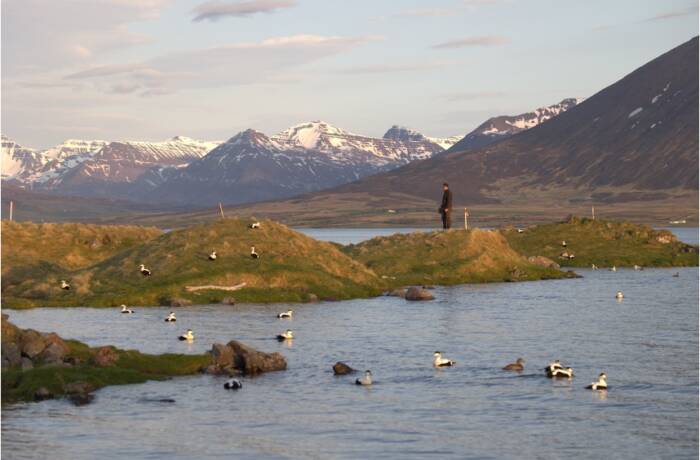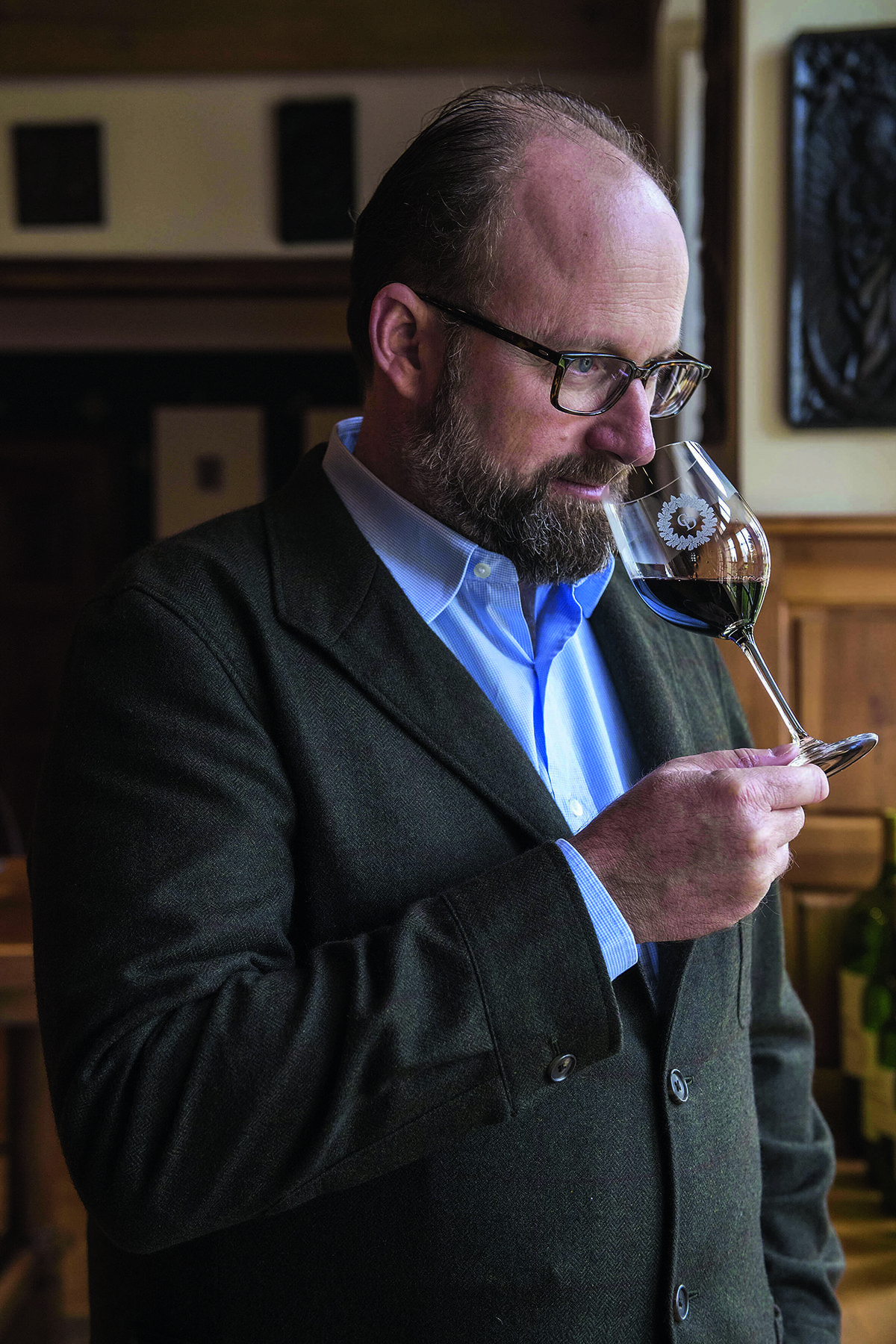
Prince Robert de Luxembourg. Courtesy of Domaine Clarence Dillon. F. Poincet @ OccitMedia
Prince Robert de Luxembourg is taking Domaine Clarence Dillon and Château Haut-Brion, one of Bordeaux’s most prestigious wine estates, into the future by creating new winemaking facilities, a fine wine shop and a visitor centre. LUX speaks with him about mixing the worlds of art and fine wine, and growing the family business
Prince Robert de Luxembourg – just plain Robert to his friends and this interviewer – is in a hurry, although you wouldn’t know it. He is about to embark on his first family trip to the US, to visit the American side of his family, since before the pandemic. But if he’s ruffled by having to deal with the stresses of international travel currently, he isn’t showing it. “And how have things been with you?” he asks, listening thoughtfully and diverting briefly into a conversation about how curious the media world is right now.
Follow LUX on Instagram: luxthemagazine
Robert is someone who could easily have done very little at all; after becoming involved in the family company a decade earlier, in 2002 he became Managing Director of the family’s holding of Domaine Clarence Dillon, which owns, among others, one of the world’s most celebrated wine estates, Château Haut-Brion. Haut-Brion is what is known by connoisseurs as a ‘First Growth’, standing alongside Châteaux Lafite, Mouton-Rothschild, Latour and Margaux; the China-driven rise in values of these wines in the past 20 years has meant a surge in profit margins for their owners. A case of 12 bottles of 1989 Château Haut-Brion will set you back more than £15,000 (more than US$20,000); in a restaurant, a recent vintage will usually be priced north of £1,000 per bottle.
Haut-Brion also has more heritage than pretty much any other wine: American founding father Thomas Jefferson famously took a case home to Virginia in the 1780s; and, for those who care about these things, it has a distinctive style, often richer and more earthy than its fellow first growths.
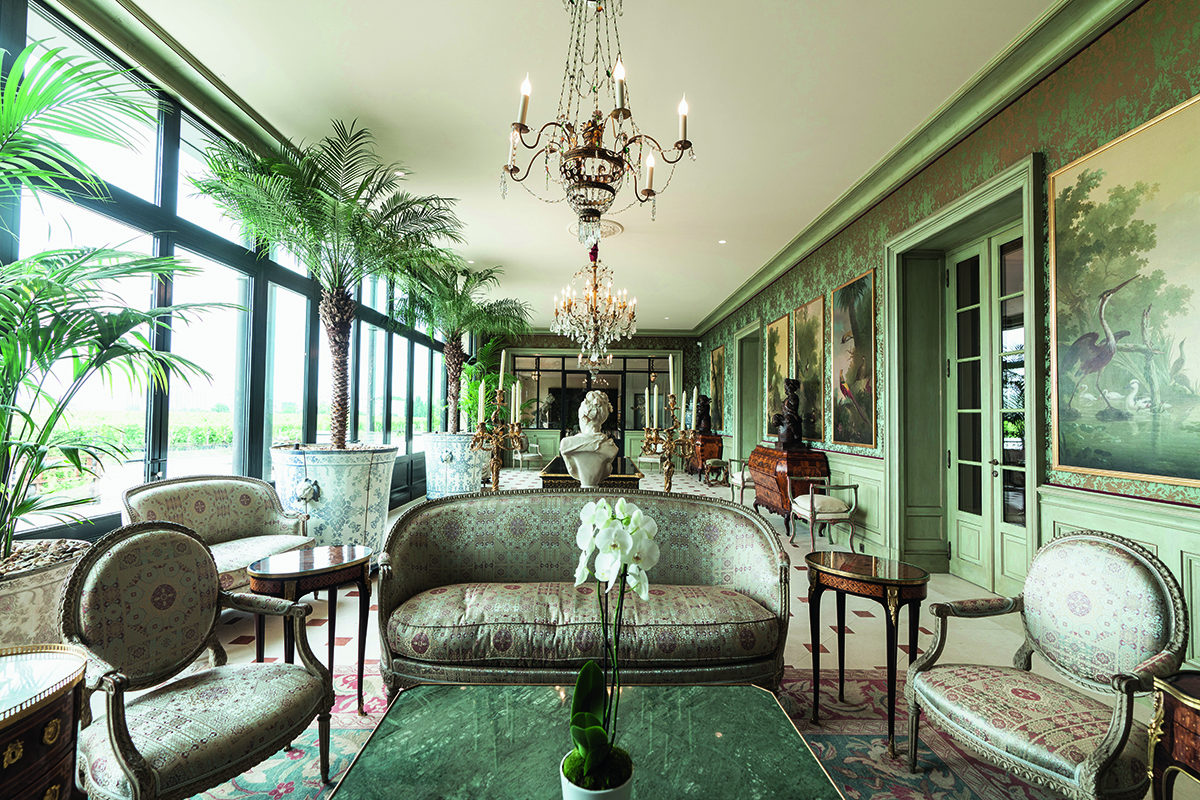
The salle des vignes in the 19th-century Pavillon Catelan, at Château Haut-Brion in Bordeaux, which has been converted and extended into a new visitor centre. Courtesy of Domaine Clarence Dillon
Like his wine estate, Robert has strong links to the US: his mother, Joan Dillon, was a stalwart of the US political establishment, who married Prince Charles of Luxembourg, a direct descendant of King Henry IV and Louis XIV, and a member of the Bourbon family. The heritage of the estate and other holdings in Domaine Clarence Dillon comes from his mother’s line: it was his maternal great-grandfather, Clarence Dillon, a Texan financier, who purchased Haut-Brion in 1935.
There’s an element of the Texan in Robert; his warm-hearted greetings, openness to conversation, straightforwardness. His English is somewhere between the private-school British of his upbringing and the East Coast aristo of his US family.
There is another side to him that needs prising out a little: the creative. He started out as a Hollywood screenwriter, one with considerable potential it appears, as one of his screenplays piqued the interest of Stephen Spielberg and was eventually optioned by Colombia Pictures. Although we don’t talk about it much, he plainly enjoys his interactions and ideas with the media and film crews, and there is creativity in both his planning as he expands and recreates his Domaine for the next decades and in the execution of elements such as Le Clarence and Pavillon Catelan.
The former is the restaurant he opened in Paris in 2015, now with two Michelin stars under chef Christophe Pelé, which, though reflecting a decidedly modern version of French cuisine, has been created to feel like dining at a Bordeaux château. The latter is his new creation at Château Haut-Brion and its (almost equally celebrated) neighbour La Mission Haut-Brion, a lavish visitor centre with contemporary-Baroque drawing and private dining rooms. The key message: the visitor experience can now be as lavish as are the wines.
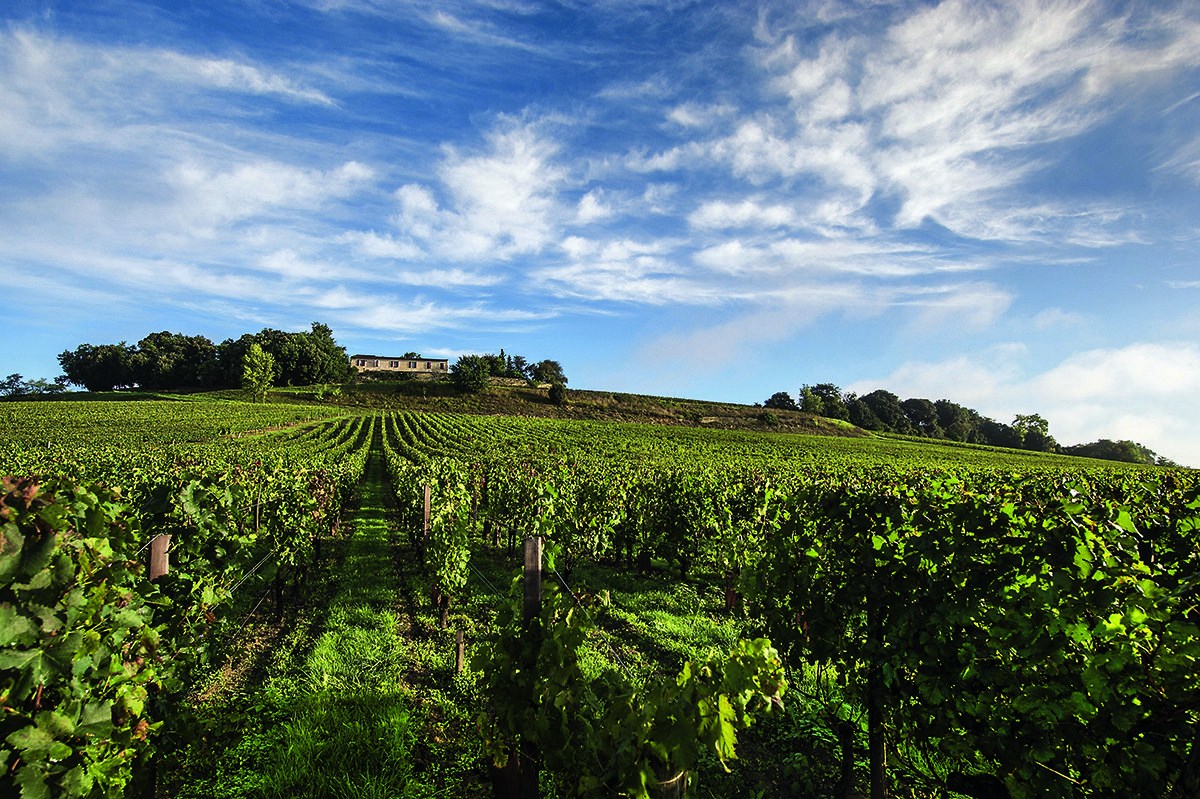
Château Quintus in Saint-Émilion, part of Domaine Clarence Dillon. Courtesy of Domaine Clarence Dillon
LUX: To what extent have you transformed Domaine Clarence Dillon? It’s a broader business now than when you took over.
Robert de Luxembourg: It was a farm when I arrived as a child. We had no offices, it was just one venerable wine estate, Haut-Brion. There was an accountant who would come maybe one or two times a week to my great-grandfather’s apartment in Paris and that was the only ‘office work’ that was undertaken. There was also a gentleman who would organise visits in Bordeaux occasionally. At that time it was a farm and today, we have become a group of companies, the mother company being Domaine Clarence Dillon. This entity oversees five subsidiaries, three vineyards and many more wines. We have grown into a substantial and expanding wine business enjoying a multitude of related activities.
Read more: David Taggart on photographing our cover star Jeff Koons
I believe considered growth is important for a family company in order to survive and flourish. In the short term, you could do very well having one extraordinary trophy, but if you want to keep the family involved and the shareholders happy over the long term, you also have to evolve and grow. That is as important as the element of pride and belonging and being part of an exciting story. The bottom line is making sure that future generations of our family remain committed and invested in the business. So, yes, growth has been a part of my strategy along with enjoying the creativity of developing new lines of business. This company spirit is important to all of our stakeholders – my colleagues, my family and ultimately our customers. Tradition and innovation are an integral part of our DNA. As an entrepreneur, and standard bearer for our family and company, I find this mix both exciting and rewarding! Every time you start something new, it offers you all kinds of other directions in which you can take the business, whether it’s a restaurant, or retail or wholesale. I am very proud to say that we have accomplished this successfully in all of the related lines of business that we have developed. Clarence Dillon and Haut-Brion were my initial inspiration. This has led us to reach a level of excellence in all of our new activities that become references of quality in their own domains in the world of fine wine.
By the way, we have just had one of the most successful en primeur campaigns of all time. Quite unexpected, given the context! This is particularly exciting for Quintus but also for Châteaux Haut-Brion and La Mission. Our campaign lasted two-and-a-half hours during which we sold all the wine that we released on the market. Life slowly seems to be coming back to normal and it is gratifying to see interest and sales returning from hotels, restaurants and the airlines industry, which had remained very quiet over the previous 18 months.
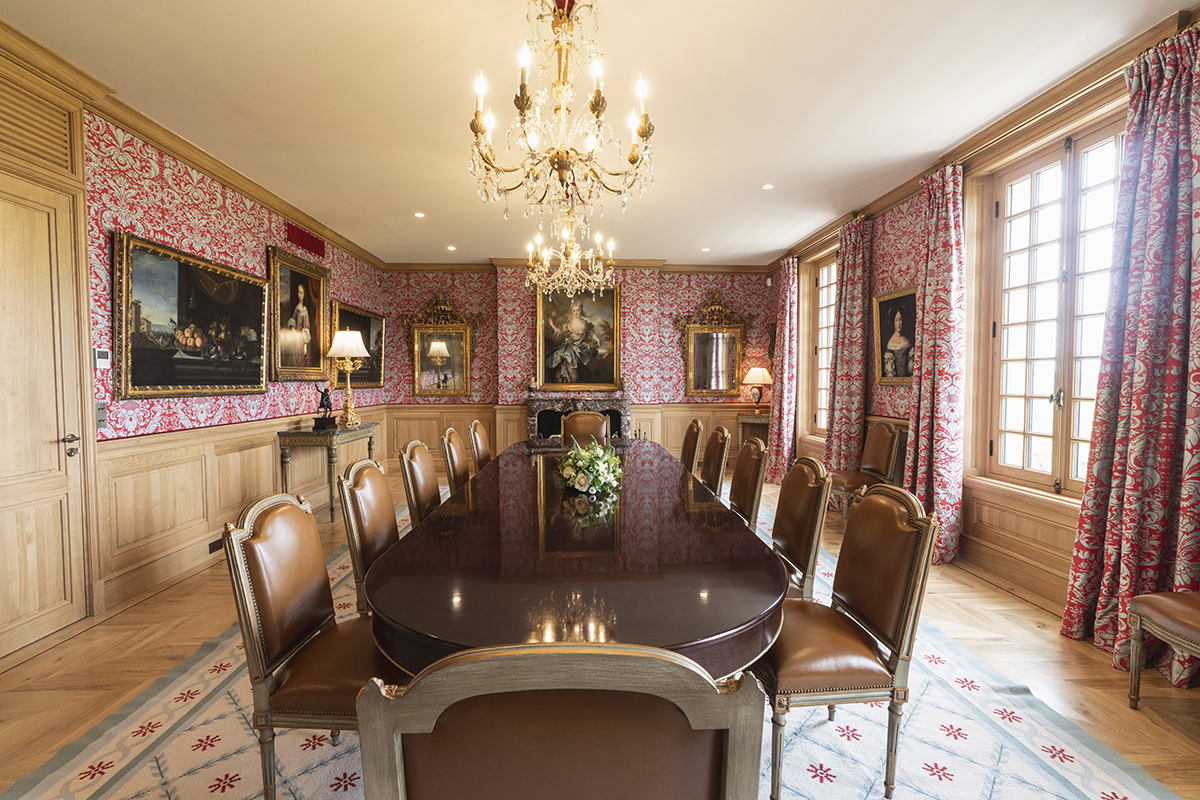
The salon gentilshommes, one of the private dining rooms at Pavillon Catelan. Courtesy of Domaine Clarence Dillon
LUX: You are building a new cellar at Haut-Brion. What prompted this?
Robert de Luxembourg: All big changes at the estate, even dating back to the 17th century, have been driven by newer winemaking practices. Whether it’s the Pontac family producing new French claret or the introduction of adding sulphur and racking and even introducing estate bottling later, these winemaking developments are constantly driving innovation. When we brought in tractors in the 1950s, I think they were the first in Bordeaux and we had to house them somewhere, so we needed a building. When we brought in new vats in 1961, which were the first steel ones to be used in winemaking in Bordeaux, the buildings needed to accommodate them. And then in 1991, 1990 or even 1987, when we were rebuilding the entire chais at La Mission and designing new vats, this informed our advances during the following decades.
Over the past ten years we have been re-thinking our whole way of winemaking. This is driven by a desire to offer the finest winemaking tools in Bordeaux to our colleagues. We also aim to create carbon-neutral buildings that offer the perfect working environment for my colleagues and an exceptional visitor experience that focuses the attention squarely on the world’s most eminent historical winemaking estate, Château Haut-Brion.
None of this is particularly new. We started integrating the first solar panels back in the early 1990s at our estates, and we’ve slowly continued to build these up over the years. Now, with this new project, our intention is to complete this work at Haut-Brion by fashioning a totally carbon-neutral installation. Through our collaboration with the German-American architect Annabelle Selldorf and her team, we are developing the Château Haut-Brion installations of the future, while respecting the past and placing the focus back on this historic estate. This will be the most important undertaking at this estate for the past few centuries. We have been working on it for six years and it will take four more vintages to complete.

The salle des vignes at the Pavillon Catelan. Courtesy of Domaine Clarence Dillon
LUX: Your winemaker and Deputy General Manager Jean-Philippe Delmas must have a big role in this?
Robert de Luxembourg: Absolutely. The technical considerations for this project were front and centre. Jean-Philippe, alongside our Technical Director, Jean-Philippe Masclef, have together been driving this key process. It is interesting to think that Mr Delmas’s family has been overseeing all of these technical revolutions at this estate across three generations, starting with his grandfather, Georges Delmas, in 1923. At the very start of this project, having identified our architect, I told them, “You have carte blanche. What tools do you need in order to make the very finest wine possible?” Then we built a whole concept around what they had come up with. That has to be the starting point because it is ultimately exceptional terroir and wine that have always driven our success. After this came safety, comfort, ESG, sustainability and the visitor experience. Covid-19 provided us with extra time for reflection.
Read more: Maryam Eisler’s Spectacular New Photography Exhibition Opens At Linley In London
It has been a wonderful experience working with Annabelle Selldorf. Her firm had no experience in the arena of wine but a deep and very varied experience in other sectors, with a particular focus on museums, galleries and art. They recently worked on the Luma Foundation in Arles in parallel with Frank Gehry. They are just completing the extension of the Frick Collection in New York and refurbishing the Museum of Contemporary Art in San Diego, and she’s done galleries for David Zwirner and Hauser & Wirth over the years, and has recently received an important commission to work on the National Gallery in London. So, it was interesting for me to bring all of that expertise into a technical project to look at how these two worlds could come together.
The main challenge for me was that Haut-Brion has the most extraordinary history of any vineyard in the world. We didn’t want to create a huge architectural statement. If anything, we wanted to put the focus back on the Château and its story. So, we needed something technically perfect, as I’ve described already, but also, from an architectural standpoint, a structure that was rather discreet. That’s why we needed an architect whose design principles and statements wouldn’t overwhelm the history but respect and celebrate it, all the while introducing a very modern concept.
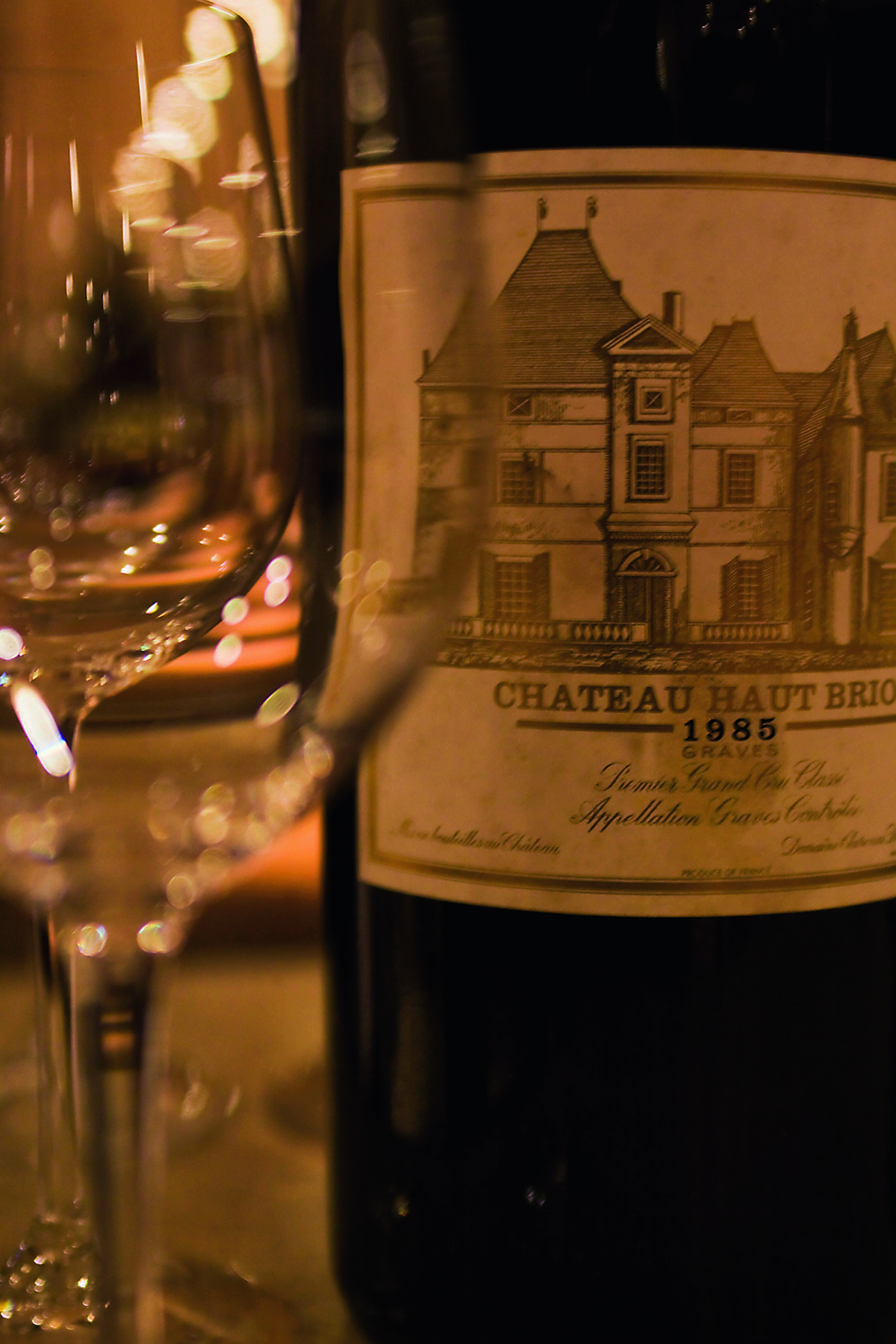
Haut-Brion 1985, a classic vintage of the château. Courtesy of Domaine Clarence Dillon
LUX: What about the design of the new chai, and how will it relate to the Château?
Robert de Luxembourg: As I mentioned, it’s a modern, carbon-neutral construction using all the latest technology, whether geothermal or solar. As far as the design is concerned, it’s purposely discreet in order to focus the eye and mind on the Château, which is one of, if not the earliest château that was built solely to oversee wine production for the Pontac family whose house was not far away in Bordeaux. So the Château has sort of been obscured over the centuries as people have added on bits such as technical buildings and farm buildings. I would love to open up the Château again so that it is the first thing you see when you arrive. This is not the case today. And we’re trying to get away from having cars and tractors and stuff in the courtyards around the Château and just have serene parks and gardens outside. And that’s another concern: how do we monitor how people are going to be coming to us? Will they be coming in self-driving vehicles? Will they be coming in self-flying drones? How do we accommodate the new visitor over the next few decades? It’s not just about what’s going to happen in five years, but the next fifty.
LUX: So what will a visitor see in 2022?
Robert de Luxembourg: Well, in 2022, it’ll be a big hole, so there will be nothing. That’s why we have built our new visitor centre. And La Mission and Quintus will still be available for visits. Also, the shop, La Cave du Château Bordeaux, opened in July.
LUX: What will the private dining experience at the visitor centre be like?
Robert de Luxembourg: The idea is to recreate the atmosphere that we have in Paris [at Le Clarence Restaurant] so that people feel they are surrounded by the vineyards and they can have tailor-made tasting experiences. They can bring their friends and have access to an extraordinary range of vintages they will not have access to elsewhere. And the wine is going to be from our estate only.
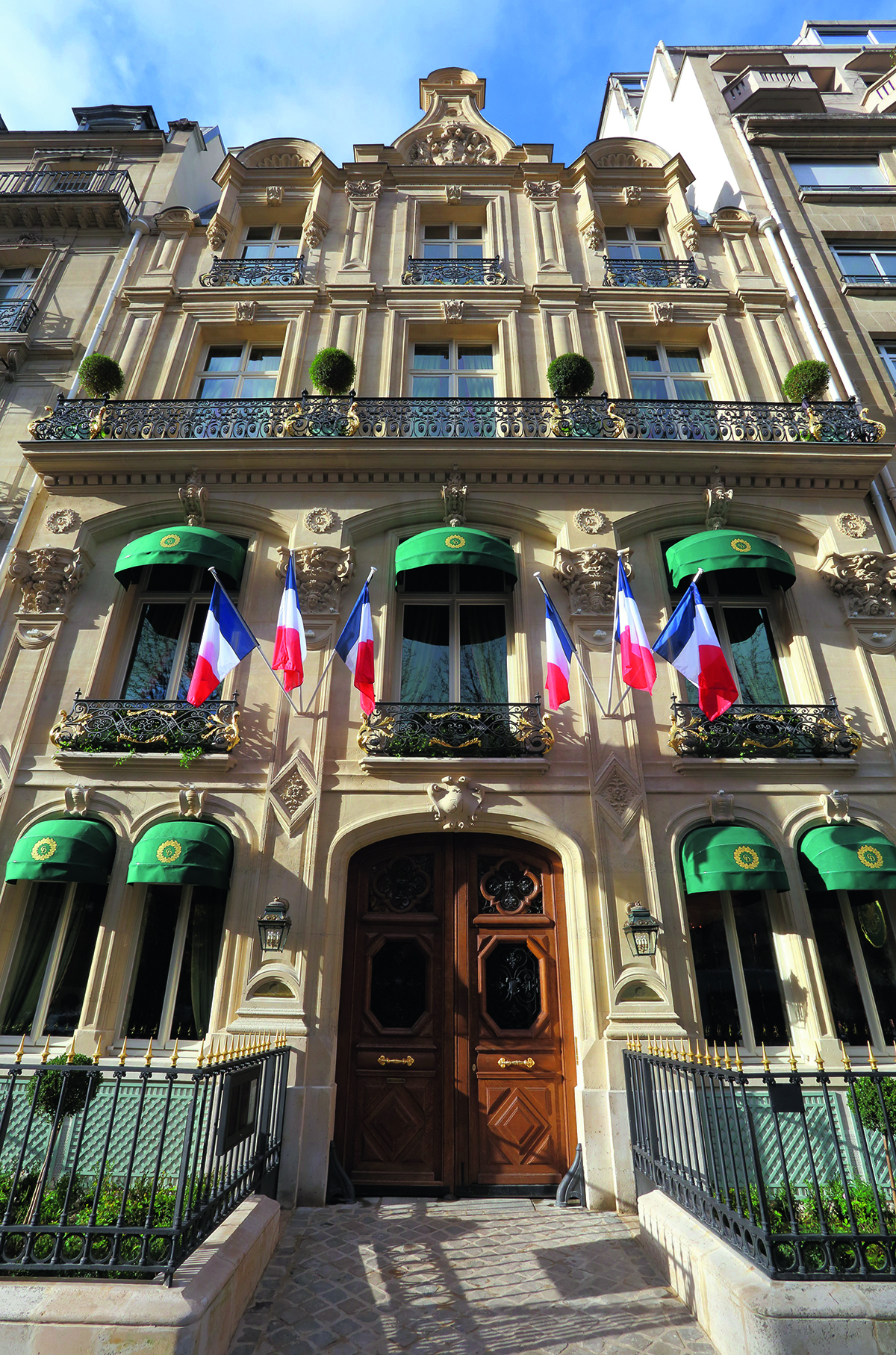
The façade of Hôtel Dillon, Paris. Courtesy of Domaine Clarence Dillon
LUX: Will there be a kind of VVIP experience that you can offer with this private dining?Robert de Luxembourg: I think anyone that comes to us should be considered a VVIP. That’s our culture here; we’ve always welcomed all visitors and everyone has been treated as a guest in our home. We’ve never, to date, sold anything. We’ve never had anyone pay for any experience: it has always been free, everyone’s always been given free wine. So, in time, that is going to have to shift, because it’s a huge amount of work to have people serve and run the visits and the rest of it. Today, we receive around 10,000 visitors a year, and pouring 20,000 glasses of La Mission and Haut-Brion for free has an impact on our stocks when we are producing very little anyway. So, I don’t think it can go on forever, but within the new buildings, we will have dedicated spaces for visitors and special dining areas. Access to certain areas, depending on what you’re interested in, will be limited, of course, because we have collections of documents in our library, our collections of cultural tools, etc. Our new facilities will be outside the new visitor experience, but for the next few years – because it’s a three-year process before we even start the other building – we will have people using this space and they’ll be able to have catered lunches or dinners.
Read more: Entrepreneur Utsava Kasera on finding his gap in the market
LUX: Is it returning to business as usual at Le Clarence, following the lockdowns?
Robert de Luxembourg: I’ve tried to bother the chef as little as possible because it’s been complex getting up and running again. So far, the feedback that I’ve received from people who are friends of mine who have gone there has been very positive. It’s getting back into training and if you’re playing at the top of the league, you need to build up slowly and so that’s what we’re doing. I anticipate that we will become a little bit more normal in our practices and open up further come September. Our private rooms have had little use – we haven’t felt comfortable doing that – but it’s all now slowly returning to normal. What’s great is that people are so excited to be there with us. People are coming and staying very late. That’s part of the advantage the way the Clarence is conceived: they come and they stay. It can be challenging for our team because we have people still finishing their lunch at 6.30pm just as we have diners arriving, so we need to accommodate that, especially when people have missed this experience so much that they don’t want to depart.
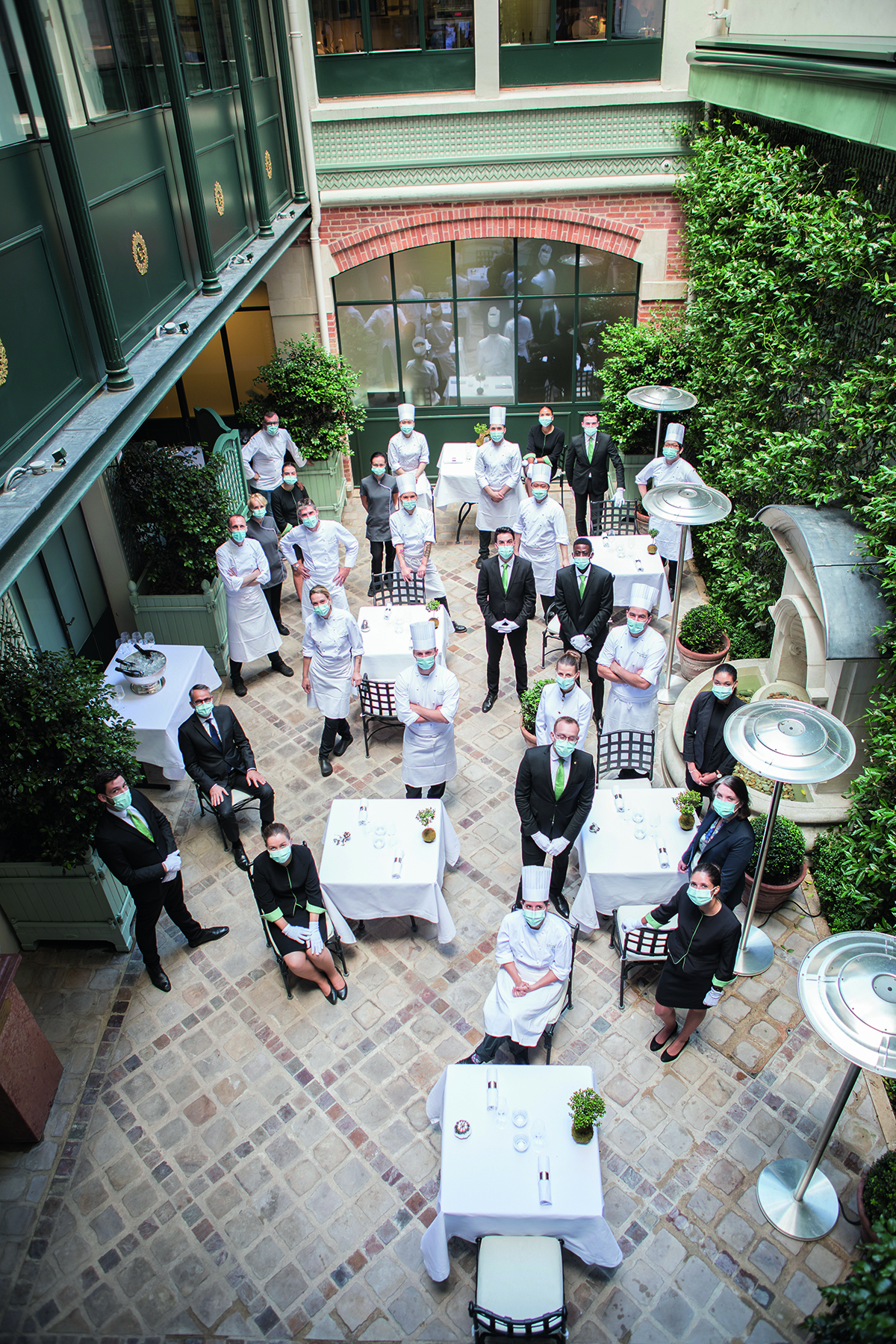
The team of the hotel’s restaurant Le Clarence. Courtesy of Domaine Clarence Dillon
LUX: Can you tell us more about the 2020 vintage and also a bit about Château Quintus?
Robert de Luxembourg: Well, 2020 has been a huge success. Obviously, over the past few years we’ve had Mother Nature on our side. One of the positive aspects of global warming – if you’re looking for them – is that we’ve been making some extraordinary wines with vintages that happen to be in line with some of the finest vintages made over the past century. When you look at vintages such as the ’45s, the ’47s, the ’59s, the ’61s, the ’82s and the ’89s, they tended to be hot, dry vintages but still with enough humidity for the wine not to be stressed. Even 2003, which was the hottest, still has lovely acidity in the reds and the whites didn’t suffer either. The weather conditions have been perfect in order to produce great vintages and obviously the techniques have also improved significantly.
With Quintus, we’ve acquired three sites with different vats, both concrete and steel, so it was also an amazing laboratory for us to work in. Ironically, there was probably more variety to work with here for our winemakers than they had at La Mission or Haut-Brion. It’s taken some time for them to fully come to terms with the terroir, which is normal, but with 2020 we’re now coming up to our tenth vintage.
We’ve grown with the property, we understand it better every year, and I think we’ve made the best wine so far in 2020 and it’s recognised by the market. It’s the first time where, you know, critics are confidently saying, “Yes, this is a truly great wine and terroir”. We have totally changed the winemaking practices here on the right bank. I have never hidden the fact that my motivation is to produce one of the top (if not the finest) right bank and Saint- Émilion wine at this estate. That is why we named the estate Quintus (as the Romans may have named their fifth child). Quintus has the same potential as our first four wines, both red and white, to be one of the very finest wines in the world. I believe that we are up to the task of making this dream a reality!
Robert de Luxembourg’s key milestones
2002: Becomes Managing Director of his family’s Domaine Clarence Dillon, owner of Château Haut-Brion
2005: Launches mid-market wine brand, Clarendelle
2008: Takes over as Chairman
2009: Completes major refurbishment at Château La Mission Haut-Brion and begins the same at Château Haut-Brion
2011: Acquires Château Quintus
2015: Opens Le Clarence restaurant and La Cave du Château wine shop in Paris
2021: Opens the Pavillon Catelan visitor centre and La Cave du Château at Haut-Brion
2025: Château Haut-Brion cellar refurbishment due to be completed
Find out more: domaineclarencedillon.com


